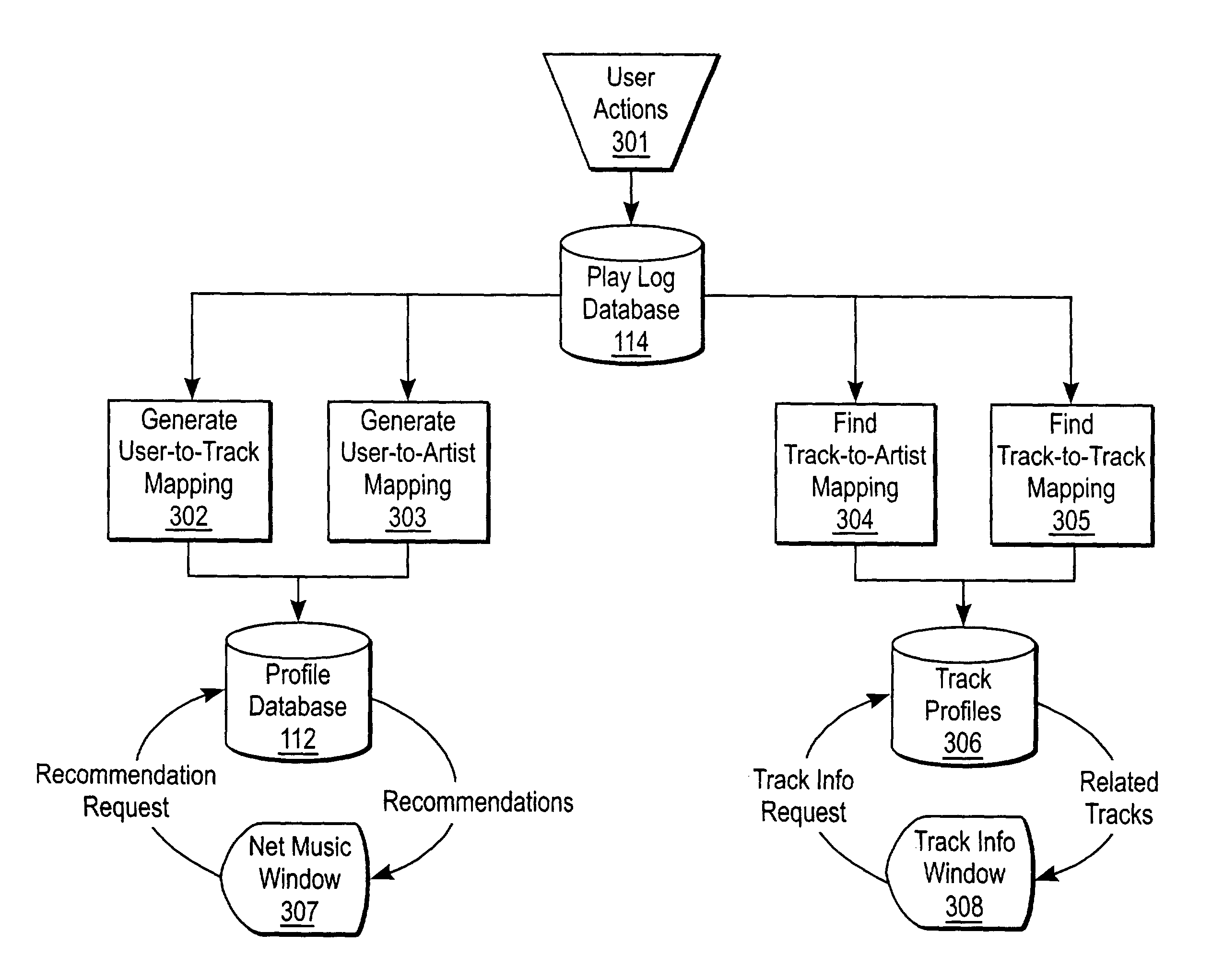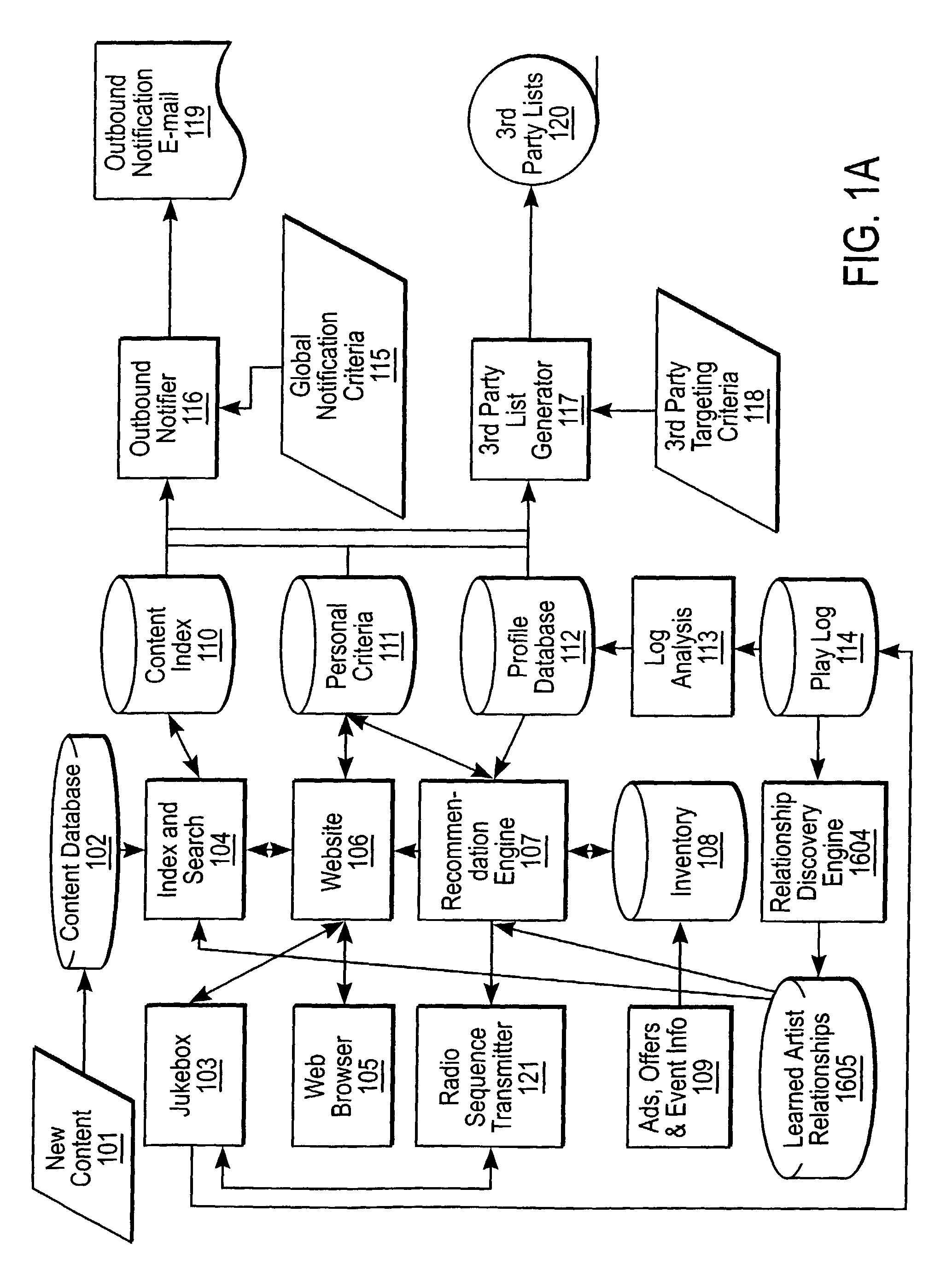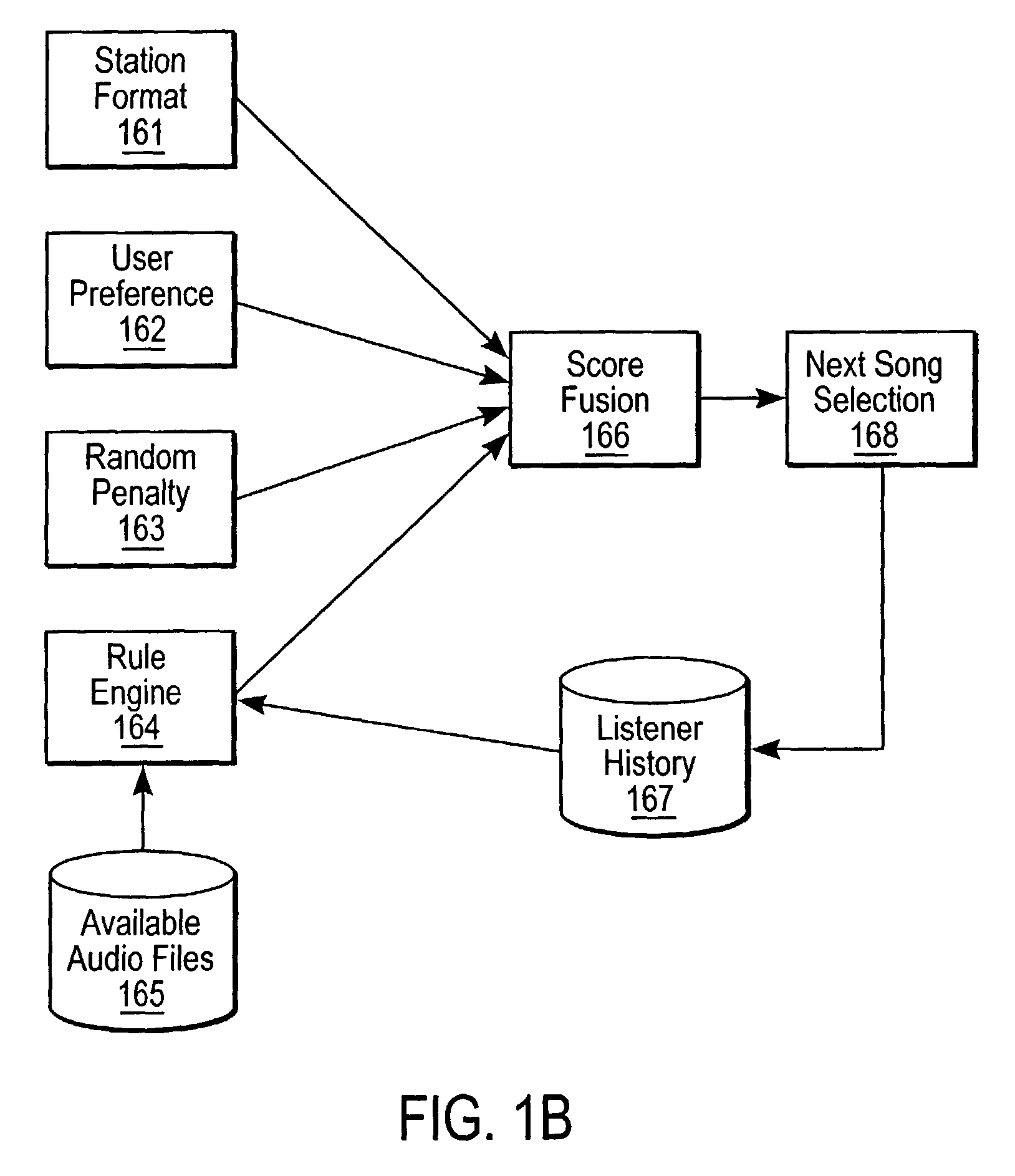However, many users may be reluctant to complete such online questionnaires, due to privacy concerns, or due to an unwillingness to take the time required to answer the questions.
Furthermore, such questionnaires often fail to accurately collect user preference information, since they do not actually reflect the user's consumptive behavior; in other words, users may answer inaccurately because they are unaware of (or dishonest about) their own preferences.
In addition, the accuracy of the results is limited by the quality of the designed questions.
The above-described technique for observing user behavior may lead to inaccurate results.
The relatively small number of purchases tracked by any particular store may be insufficient to develop a reasonably accurate
user profile in a relatively short period of time.
Thus, recommendations in such systems are often inaccurate since they are based on insufficient information.
Furthermore, some purchases may be gifts, and may thus fail to accurately reflect personal preferences of the purchaser.
In some cases, the purchaser may specify that an item is a gift (by requesting gift-wrapping, or a gift message for example), so that the item may be excluded from user behavior analysis; however in many cases the purchaser may not make the online merchant aware of the fact that the purchase is a gift, and there may be no way for the merchant to make this determination.
Distortions and inaccuracies in the
user profile may then result.
Finally, distortions may result from the fact that, once a purchase is made, the merchant may not be able to easily determine whether the purchaser was satisfied with the product.
This is a particular problem in connection with products that are typically only purchased once, such as books, videos, and compact discs.
The online merchant cannot determine, from the
purchasing behavior, the musical tastes and preferences of the user, since the merchant is not aware of the post-purchase behavior of the user.
In addition to the above problems with data gathering for developing user profiles, there are additional limitations and shortcomings of conventional recommendation engines, with respect to the
data analysis that is performed to generate recommendations.
Such a
data analysis technique often leads to inaccurate results, particularly when the observed purchase is a relatively rare product.
Relationships among such products often tend to be overstated, since relatively few data points are available for both the purchased product and the suggested product.
Thus, the significance of a particular co-occurrence (i.e. an observed purchase of two products by the same individual) is given undue weight, when in actuality the co-occurrence may merely be a
coincidence and may not provide an accurate indication of a relationship between the two products.
Conventional
data analysis techniques often fail to yield meaningful results, because of both the overstated significance of coincidental co-occurrence, and the overpowering influence of best sellers.
The above-described technique is deficient, in that quantization effects tend to overpower meaningful results.
Particularly where event counts are small, coincidences often translate into perfect correlations, yielding misleading results.
However, Pearson's Chi-Squared test yields misleading results when one of the events is relatively rare (such as when the expected count is less than 5).
In such situations, the assumption of normal distribution tends to lead to an overstatement of the significance of the co-occurrence.
However, such systems may also lead to inaccurate results, since the set of archetypes is often insufficient to accurately describe individual real-world users.
In many situations, archetypes are non-orthogonal to one another, and the archetype set thus provides a poor basis space for modeling users.
The
system may thus fail to provide a concise description of a user (if too many archetypes are needed to provide an accurate description), or the description may not be accurate (if too few archetypes are used).
Such an approach leads to similar disadvantages as described above with respect to questionnaires, and also may lead to inaccuracies as users have difficulty selecting a subset of archetypes that accurately reflects their own preferences.
In such an approach, it rapidly becomes apparent that, no matter how many archetypes are available, the user cannot easily be defined as a sum of fixed archetypes.
This massive overlap of best sellers exacerbates the problem of non-orthogonality of the archetype set.
If bestsellers are removed from the set of items, results may be inaccurate because coincidental co-occurrences then dominate, as described above.
This problem may be even more prevalent when this approach is employed, since the non-orthogonality of the archetype set tends to increase the
noise sensitivity of the system, so that coincidental matches (as described above) become even more significant, leading to increased levels of
distortion and unsatisfactory results.
However, such reduced-dimensionality systems suffer from the limitation that distinctions between words tend to be lost when reducing the dimensionality of the system.
The loss of such distinctions can improve recall in an
information retrieval system, but leads to a decrease in precision.
 Login to View More
Login to View More  Login to View More
Login to View More 


